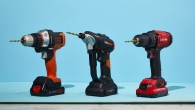
Why Does My Lawnmower Start and then Stop?
Common Causes for Starting and Stopping Issues
Identifying why does my lawnmower start and then stop can be tricky. However, several common issues often lead to this frustrating problem. First, a clogged fuel filter might be the culprit, restricting the flow of gas to the engine. Dirt or debris in the fuel lines or tank can also cause interruptions. Second, a faulty spark plug may prevent a consistent electrical spark, essential for keeping the engine running. Additionally, if the air filter is dirty and clogged, adequate air can’t mix with the fuel, leading to stalling. Moreover, the carburetor, if not mixing the air and fuel correctly due to blockage or malfunction, can cause the engine to start and then abruptly stop. Finally, old or contaminated fuel can deteriorate over time and may not ignite properly, leading to inconsistency in engine operation.

To keep your lawnmower in optimal condition, periodically check these components. Simple replacements or cleanings often fix the start-stop issue. Failing to address these problems not only hinders your lawn maintenance but can also lead to more significant damage to your lawnmower’s engine.
Troubleshooting Fuel System Problems
Troubleshooting the fuel system is a crucial step in solving why a lawnmower starts then stops. Begin by examining the fuel filter. If it’s clogged, replacing it can restore the fuel flow. Next, inspect the fuel lines and tank for dirt or debris. These impurities can cause obstructions impacting the lawnmower’s performance. Cleaning these components often resolves the problem. Also, verify the fuel itself; old or contaminated fuel might not ignite properly. Consider draining old fuel and refilling the tank with fresh gasoline. Similarly, ensuring airtight connections within the fuel system can prevent issues related to vapour locks. These steps typically solve most start-stop issues related to the fuel system.
Inspecting Ignition Components for Faults
When investigating why a lawnmower starts and then stops, examining the ignition components is essential. Start with the spark plug. It should be clean and properly connected. A faulty spark plug can disrupt the engine’s ability to maintain running. Check for any wear or damage and replace the spark plug if needed.
Next, inspect the ignition coil. This part transfers electricity to the spark plug. A malfunctioning coil can prevent the engine from starting. Using a multimeter, verify the coil’s continuity. Replace the coil if the readings are outside the normal range.
Lastly, do not overlook the ignition switch. It plays a crucial role in starting the engine. A faulty switch could abruptly stop the engine. Test the switch with a tester tool and replace it if necessary.
Addressing these ignition issues can significantly improve your lawnmower’s functionality and prevent frequent stops.
Air Flow and Filter Maintenance
Maintaining proper air flow is key to a lawnmower’s performance. When an engine runs, it needs a balanced mix of air and fuel. A blocked air filter disrupts this balance. This can cause the lawnmower to start, then stop after a short time. Regularly check and clean the air filter to prevent this issue. A clean filter allows air to reach the engine smoothly.

Here’s how to maintain the air flow and filter effectively:
- Inspect the Air Filter: Remove the filter and examine it for dirt or clogs. A visual inspection will show if it’s dirty.
- Clean the Filter: If the filter is lightly soiled, tap it to remove dust. Some filters are washable. Use water and a mild detergent, then dry it completely.
- Replace the Filter: If cleaning doesn’t do the job, replace the air filter. Get a new one that matches your mower’s model.
- Check for Leaks: Ensure that the air intake system is free from leaks. Any gaps or holes can let extra air in and disrupt engine function.
A clean air filter supports a strong and steady engine performance. Overlooking filter maintenance is a common mistake. Don’t forget to tackle this simple task. It could be the reason why your lawnmower starts and then stops.
The Role of the Carburetor and Possible Malfunctions
The carburetor is critical for a lawnmower’s engine. It blends air and fuel for proper combustion. If this mix is off, your lawnmower may start and then stop. Common carburetor problems include blockages, wear, and adjustment issues.
Here are steps to check for carburetor malfunctions:
- Look for Blockage: Dirt and debris can clog the carburetor, preventing fuel and air mixing.
- Check the Adjustment: The carburetor might need adjusting. Follow the manufacturer’s guide.
- Inspect for Wear: Over time, the carburetor’s components can wear out. This may hinder its function.
- Clean Regularly: Use carburetor cleaner to remove buildup. Do this during routine maintenance.
When you manage carburetor issues, it can fix the start-stop problem and improve performance.
Checking the Lawnmower’s Spark Plug
The spark plug is a critical part of your lawnmower’s ignition system. A bad spark plug can cause your lawnmower to start then stop. Keep your lawn cutting smooth by checking and maintaining the spark plug.
- Inspect the Condition: Pull out the spark plug. Look for signs of wear or damage. Look for a dark, sooty appearance or damaged electrodes.
- Clean the Plug: If it’s dirty, use a brush to remove debris. For heavy deposits, a spark plug cleaner may help.
- Check the Gap: The gap between electrodes is important. Use a feeler gauge to check it matches your mower’s specifications.
- Replace if Necessary: If cleaning doesn’t fix the issue, get a new spark plug. Make sure it fits your lawnmower’s model.
- Install Properly: When putting in a new spark plug, don’t overtighten it. This could damage the engine’s threads.
Repeat these steps routinely. It will help prevent issues where your lawnmower starts and then stops. Regular maintenance could save you from bigger problems later.
Importance of Regular Lawnmower Maintenance
Maintaining your lawnmower regularly is crucial for its optimal operation. Without proper care, several issues may arise, leading to the frustrating start-stop problem discussed earlier. Here are key aspects of routine maintenance that can prevent many common lawnmower problems:
- Check Oil Levels: Always ensure the oil is at the correct level. Low oil can damage the engine.
- Sharpen the Blades: Dull blades tear rather than cut the grass. Sharpen them to improve performance.
- Tighten Loose Bolts and Screws: Loose parts can make the mower vibrate excessively and cause other damages.
- Clean After Use: Remove grass clippings and mud from the mower. This prevents rust and blockages.
- Store Properly: Keep your lawnmower in a dry, covered area to protect it from weather elements.
Regular maintenance not only keeps your lawnmower running smoothly but also extends its life, saving you money in the long run on repairs or replacements. Remember, a well-maintained lawnmower is less likely to have the frustrating ‘start and then stop’ issues. Always refer to your mower’s owner manual for specific maintenance guidelines.

Professional vs. DIY Repairs: When to Seek Help
Absorbing the knowledge of basic lawnmower repairs can keep you from unnecessary costs. But knowing when it’s time to call in the professionals is equally important. Pay attention to your skills and the complexity of the problem. Here’s a guide to help you decide between a DIY fix or professional help.
- Consider Your Expertise: If you’re not confident in your repair skills, seek expert help. Even a simple mistake can worsen the problem.
- Assess the Issue: Simple maintenance issues, like a dirty air filter or a clogged fuel line, are easy to handle on your own. More complex issues, like engine repairs, might need a professional touch.
- Safety First: If a repair seems dangerous or you lack the proper tools, don’t risk injury. Professionals have the training and equipment to safely handle repairs.
- Check Your Warranty: DIY repairs could void your warranty. If your lawnmower is still under warranty, let the professionals handle it. This will ensure you don’t lose out on your warranty benefits.
- Cost Assessment: Compare the cost of DIY repairs to professional services. Include the price of parts and your time. Sometimes, professional repair can be cost-effective in the long run.
Remember, recurring ‘start and then stop’ issues hint at a deeper problem. If after basic troubleshooting your lawnmower still isn’t running right, consider seeking professional help. They can diagnose and fix the problem accurately, ensuring your lawnmower runs smoothly for seasons to come.












Leave a Reply